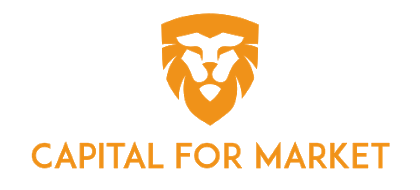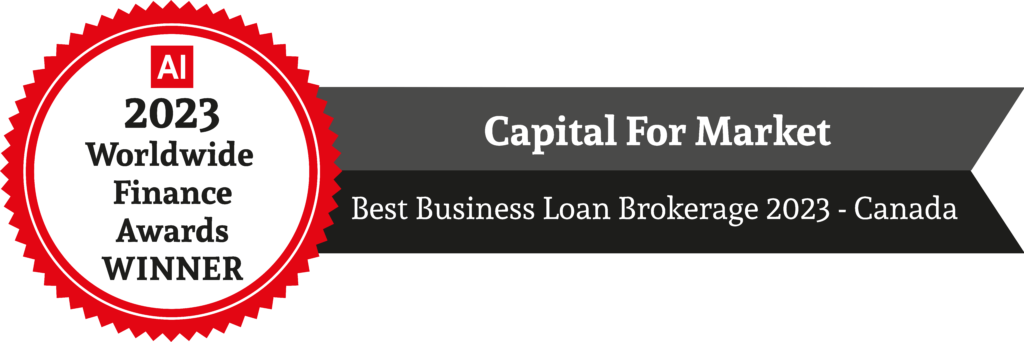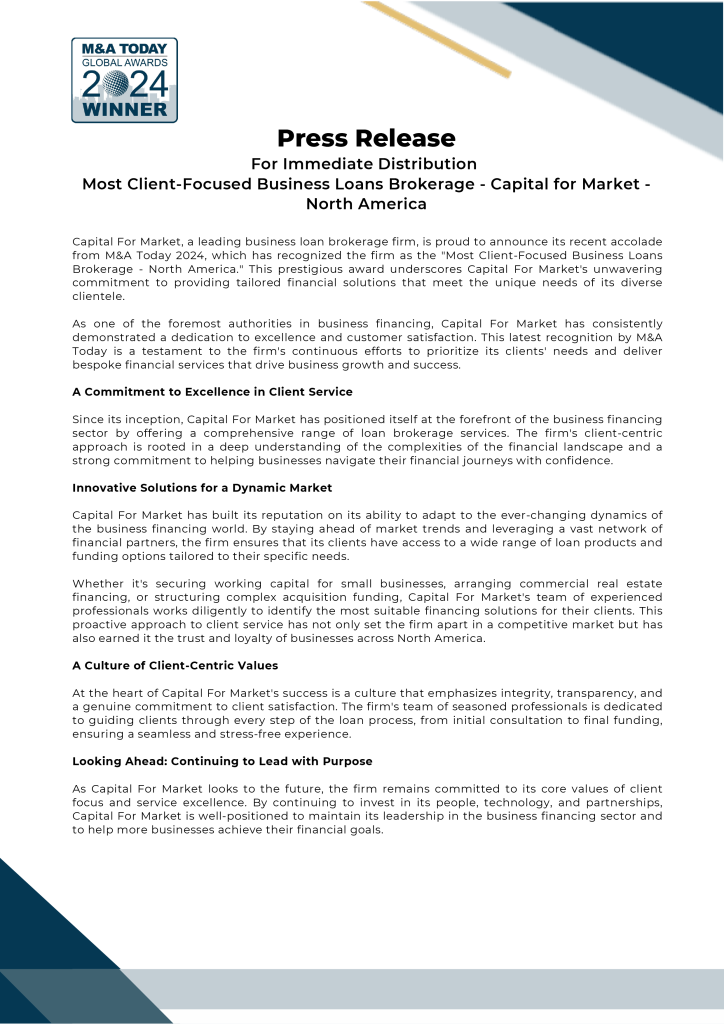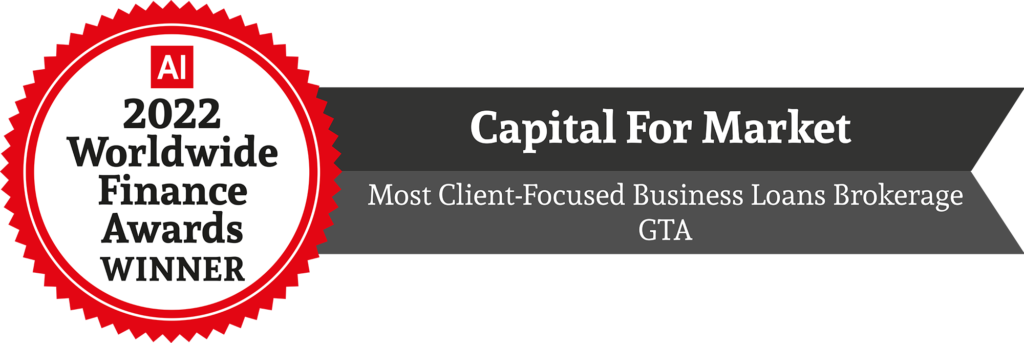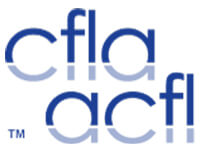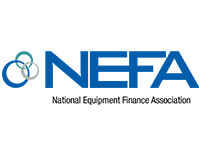Canadian small business financing is critical as the calendar year winds up and owners across Canada review their options for a sound start to 2025. Whether one wants to expand operations, purchase more equipment, or higher more employees, the correct type of financing can accelerate growth. Understanding how to maneuver through the world of small business financing in Canada will better prepare you to make the right decisions and take advantage of various opportunities.
Let’s look at the types of financing available to small businesses in Canada, the qualification process, and some realistic ways the funding can spur growth in 2025.
Types of Canadian Small Business Financing
Finances for small businesses in Canada span direct finance avenues to private lender solutions, flexible credit arrangements, and event-specific needs or goals for growth. The following sections are an overview of some of the most common avenues for small business financing available in Canada.
Each of these subjects, from managing cash flow to expanding on a large scale, has its advantages and disadvantages. Canadian entrepreneurs will be better off taking matters into their own hands and utilizing whatever strategy best meets their financing needs for given goals and operations.
1. Government Programs and Grants for Canadian small business financing
The Government of Canada has several supportive-type grants and loan programs for Canadian small business financing. Programs like the CSBFP finance critical expenses, such as equipment purchases and leasehold improvements, helping companies invest in growth and operations. These are availed through financial institutions, with partial governmental guarantees involving additional security. Agencies like the Business Development Bank of Canada offer term loans to meet specific business requirements, such as purchasing new equipment or expansion and innovation projects.
Advantages of Government Programs and Grants for Canadian small business financing
- Government guarantees reduce the lender’s risk, making loans more accessible to small businesses.
- These loans typically offer lower interest rates compared to private sector options.
- Funds can be applied flexibly, covering needs from equipment purchases to innovation projects.
Disadvantages:
- The application process can be time-consuming and requires substantial documentation.
- Grants are often limited and highly competitive, making them challenging to secure.
2. Traditional Bank Loans – Secured and Unsecured for Canadian small business financing
For many years, bank loans have been one of the most established and widely used financing options for Canadian small businesses. There are two main types of bank loans: secured and unsecured.
- Secured Loans: These loans require collateral, such as business assets or real estate, to reduce the lender’s risk. This lowered risk often results in lower interest rates, making secured loans ideal for businesses with valuable assets to back the loan.
Advantages of Secured Loans for Canadian small business financing
- Lower interest rates due to reduced risk for the lender.
- Higher loan amounts depend on the value of the collateral offered.
Disadvantages of Secured Loans:
- Requires valuable assets as collateral, which could be seized if the loan defaults.
- Unsecured Loans: Unlike secured loans, unsecured loans do not require collateral, making them accessible to businesses with fewer assets. However, they typically come with higher interest rates and stricter qualification criteria. Unsecured loans are suited to businesses needing quick access to funds without pledging their assets.
Advantages of Unsecured Loans:
- Quick access to funds without collateral requirements.
- Suitable for businesses with limited assets but strong cash flow.
Disadvantages of Unsecured Loans:
- Higher interest rates and stricter qualification requirements.
- Loan amounts are generally smaller and often have shorter repayment terms.
3. Alternative Financing Options for Canadian small business financing
Alternative finance solutions have made access to funds flexible and quick for business owners, particularly for those who might not meet the strict requirements of traditional banks. These include merchant cash advances, peer-to-peer lending, and microloans designed to be more accessible and usually without the cumbersome application processes a bank would require.
- Merchant Cash Advances: Provide businesses with a lump sum in exchange for a percentage of future sales, making them suitable for companies with solid cash flows.
- Peer-to-Peer Lending: Connects businesses directly with investors, offering more flexibility than traditional lenders.
- Microloans: Small loans often provided by non-profits or alternative lenders, ideal for businesses with modest financing needs.
Advantages:
- Flexible requirements make it easier for businesses without strong credit to secure funds.
- Faster approval processes compared to traditional bank loans.
Disadvantages:
- Interest rates can be high, especially for merchant cash advances.
- Some options may involve giving up a percentage of future sales, affecting cash flow.
4. Lines of Credit
A line of credit represents one of the most flexible tools in the Canadian small business financing tool kit. A fixed amount of money is available for the business to draw upon, as required. Interest is payable on the sum withdrawn-only that amount. Consequently, it enables a firm to manage its cash flow or unexpected expenses effectively. Most central Canadian banks, such as CIBC, offer a line of credit intended for small business clients.
Advantages:
- Flexible, pay-as-you-go structure, with interest charged only on funds used.
- It is ideal for cash flow management and covering short-term expenses.
Disadvantages:
- Interest rates may fluctuate, leading to variable monthly payments.
- High credit utilization can impact credit scores and future borrowing capacity.
How to Qualify for Canadian small business financing
Approaching financing options for your Canadian small business should be carefully planned and prepared so that you can make as strong of an impression as possible with lenders. Each financing option is different in its requirements, and many lenders consider factors relating to financial stability, business viability, and asset availability. Knowing what to expect and taking proactive measures about those key factors will go a long way toward increasing your chances of approval and getting access to the money you need to accomplish your goals in business.
Here are four key things that you should consider if you want to be super-prepared about Canadian small business financing in today’s competitive lending environment:
1. Maintain Good Credit for Canadian small business financing
Your personal and business credit scores are crucial to qualifying for any loan. Lenders will assess your credit history to determine your ability to repay debt. According to Equifax Canada, a credit score of 660 or higher is generally considered good, but some lenders may have stricter requirements. Maintaining good credit demonstrates responsibility and proactivity in managing your business’s financial health.
2. Build a Strong Business Plan for Canadian small business financing
A comprehensive business plan that outlines your company’s goals, financial projections, and growth strategy is essential when applying for financing. This helps lenders understand how you intend to use the funds and how to repay them. BDC’s business plan guide provides a helpful template for building your plan.
3. Offer Collateral (For Secured Loans)
If you’re applying for a secured loan, offering valuable collateral can increase your chances of approval and help you secure better terms. Assets like real estate, equipment, or inventory can be used to back the loan and reduce the lender’s risk.
4. Consider Unsecured Options
Collateral-free loan qualifications for business are still available for Canadian operations, though they are more strict. The trade-offs include a higher interest rate and shorter payback periods. Make sure your financial statements and credit history are well prepared to better your chances of qualifying.
How Canadian Small Business Financing Options Stack Up:
However, financing options have pros and cons over secured or unsecured loans.
Secured Loans: These generally have a lower interest rate and provide a longer repayment period for the debtors. However, collateral will be required in the form of assets. In case of failure to return, the lender liquidates the asset.
Unsecured Loans: Unsecured loans require no collateral, but they have a higher rate of interest and a shorter tenure. However, they could be a good enough alternative for enterprises in urgent need of financing for those unable to offer extensive collateral. Even though unsecured loans may be a ray of hope in acquiring the necessary funds with sound financial statements and credit history records, this might be so.
How Financing Can Syou’ve Growth in 2025
After securing financing, the next step will be to use it strategically to support growth in 2025 effectively. The following are some of the areas in which Canadian businesses can make use of funding for expansion:
1. New Equipment or Technology
Financing helps pay the upfront costs and spreads out the payments over time. Investing in new equipment or technology can be used to upgrade existing ones, scale up production, or adopt new technologies. This will help make operations more efficient without adversely impacting cash flow.
2. Hiring and Expansion
Securing financing allows businesses to hire new staff, open additional locations, or expand product lines. As your business grows, extra revenue can be used to pay off loans.
3. Boosting Marketing Efforts
Use financing to invest in marketing campaigns, including digital and social media advertising, to reach new customers and increase sales.
4. Example: How a Canadian Business Grew with Financing
[Case study placeholder]: In 2023, a Canadian manufacturing company secured $100,000 through a secured loan to purchase new machinery, leading to a 30% increase in production capacity. With additional revenue, the business could repay the loan ahead of schedule and continue to grow.
Tax Considerations and Year-End Planning
As 2025 approaches, businesses should carefully assess how financing decisions could impact their year-end financial statements and tax filings. Interest payments on loans are typically tax-deductible, providing an economic advantage for companies that secure financing.
Consult with an accountant or financial advisor to fully understand the tax implications of your financing choices. If you’re ready to explore financing options, [Company Name] is here to help. Contact us today to discuss your goals and find the best solution for your business.
Conclusion: Take Control of Your Business Financing in 2025
With various alternative financing options available for Canadian small businesses, now is the ideal time to secure the capital you need for growth in 2025. You can strategically prepare your business to confidently meet tomorrow’s challenges by leveraging government programs, traditional loans, or alternative financing.
Partner with Capital For Market to find the right financing solution for your small business and start the New Year on a solid foundation.



